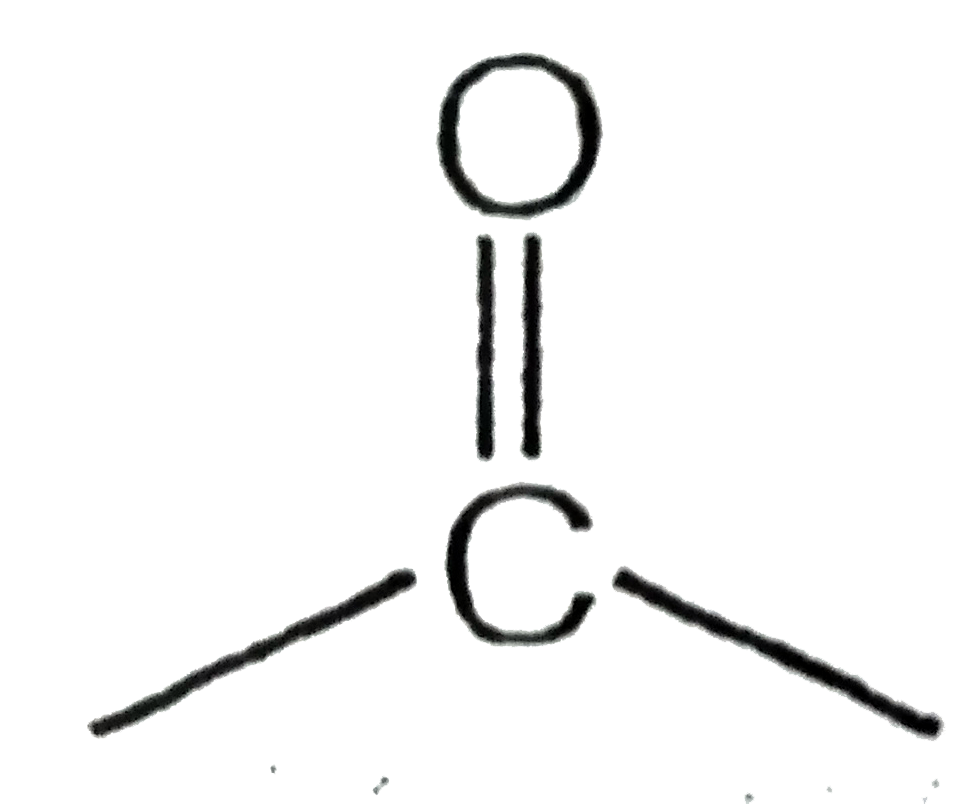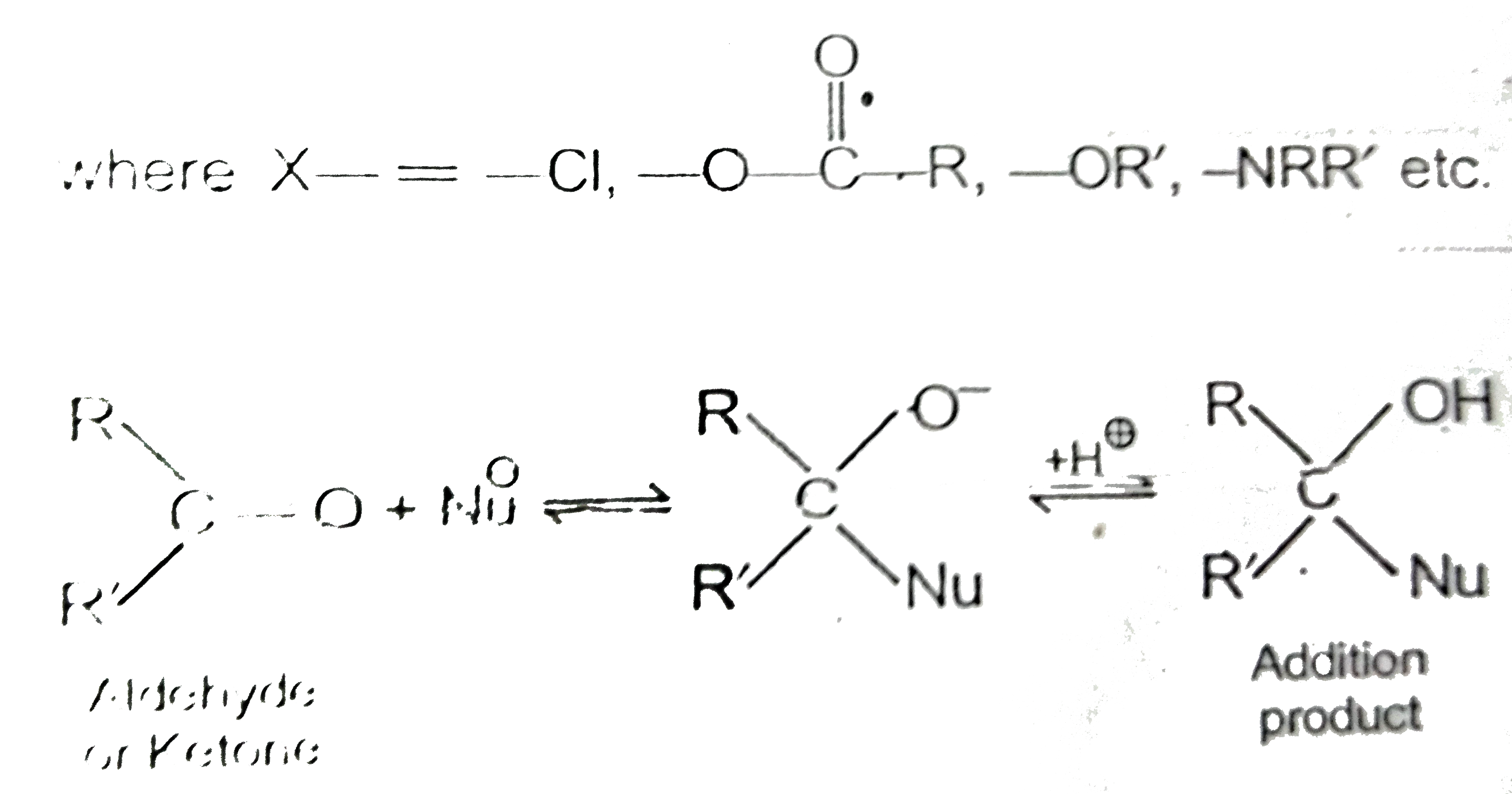Statement-I: Unlike the >C=O group of aldehydes and ketones, the C=O of R−O∣∣C−OH does not undergo nucleophilic addition reactions.
Because
Statement-II: Carboxylic acids exist as dimers due to intermolecular hydrogen bonding in aprotic medium.
Statement-I is True, Statement-II is True : Statement-II is a correct explanation for Statement-I
Statement-I is True, Statement-II is True : Statement-II is NOT a correct explanation for Statement-I
Statement-I is True, Statement-II is False.
Statement-I is False, Statement-II is True.
The correct Answer is:C
Topper's Solved these Questions
Similar Questions
Why is the bond length of C=O in carboxylic acids slightly larger than that in aldehydes and ketons ?
View SolutionBoth carbonyl compounds and acid derivatives though they contain
 grouping yet the reactions given by them are entirely different.
grouping yet the reactions given by them are entirely different.
As Aldehydes and Ketones give addition product with a nucleophile, while carboxylic acid derivatives give nucleophilic acyl substitution through addition/elimination mechanism.

Where X−=−Cl−O−O∣∣C−R−OR,−NR(R) etc.

Why aldeydes and Ketones give nucleophilic addition reaction while acid derivatives prefer nucleophilic acyl substititution reaction?
View Solution
Knowledge Check
STATEMENT -1 : unlike the > C = O group of aldehyes and ketones, the >C=O of R−O∣∣C−OH does not undergo nucleophillic addition reactions.
and
STATEMENT - 2: Carboxylic acids exist as dimers due to intermolecular hydrongen bonding .ASTATEMENT - 1 is True, STATEMENT - 2 is True, , STATEMENT -2 , is a correct explanation for STATEMENT - 1 .BSTATEMENT -1 is True, STATEMENT-2 is True , STATEMENT -2 is NOT a correct explanation for STATEMENT - 1CSTATEMENT -1 is True, STATEMENT-2 is False .DSTATEMENT -1 is False , STATEMENT -2 is True .Statement-I: Acetic acid does not undergo haloform reaction.
Because
Statement-II: Acetic acid has no α hydrogen.AStatement-I is True, Statement-II is True : Statement-II is a correct explanation for Statement-IBStatement-I is True, Statement-II is True : Statement-II is NOT a correct explanation for Statement-ICStatement-I is True, Statement-II is False.DStatement-I is False, Statement-II is True.Ketones R−O∣∣C−R ' where R = R' alkyl group can be obtained in one step by
Aoxidation of 1∘ alcoholBhydrolysis of esterChydrolysis of acid anhydrideDoxidation of 2∘ alcohol
Ketones ⎛⎜ ⎜⎝R−O||C−R'⎞⎟ ⎟⎠ can be obtained in one step by (where R and R' are alkyl groups)
View SolutionKetones ⎛⎜ ⎜⎝R−O||C−R'⎞⎟ ⎟⎠ can be obtained in one step by (where R and R' are alkyl groups)
View SolutionR−O∣∣C−OH+NaHCO3→R−O∣∣C−ONa+H2O+CO2↑⏐ ⏐ ⏐⏐
The above reaction is showing the ____________ property of carboxylic acid.
View SolutionBoth carbonyl compounds and acid derivatives though they contain
 grouping yet the reactions given by them are entirely different.
grouping yet the reactions given by them are entirely different.
As Aldehydes and Ketones give addition product with a nucleophile, while carboxylic acid derivatives give nucleophilic acyl substitution through addition/elimination mechanism.

Where X−=−Cl−O−O∣∣C−R−OR,−NR(R) etc.

Why aldeydes and Ketones give nucleophilic addition reaction while acid derivatives prefer nucleophilic acyl substititution reaction?
View SolutionConjugation of electron withdrawing groups, e.g., −CHO,
−O|C−R, −O∣∣C−OR, −C≡N, −NO2 activates nucleophilic addition. The order of reactivity of these groups is:
View Solution
